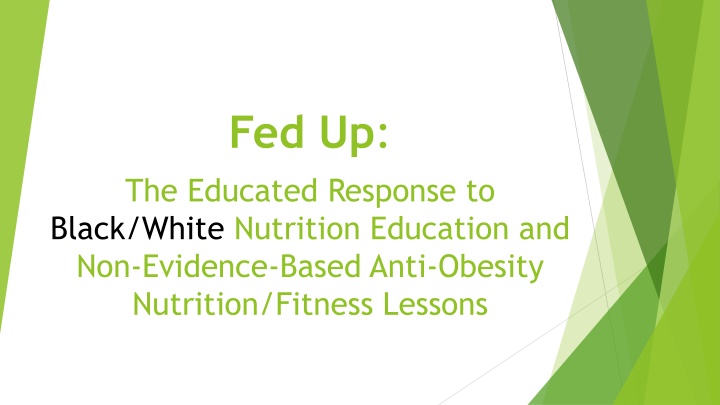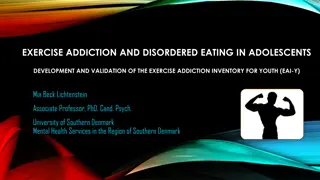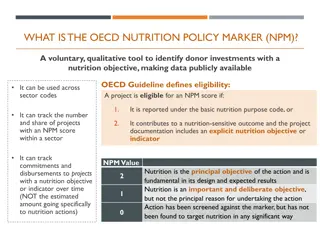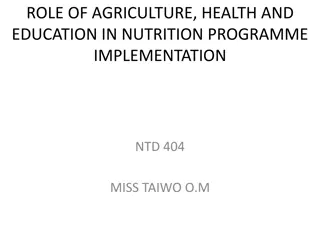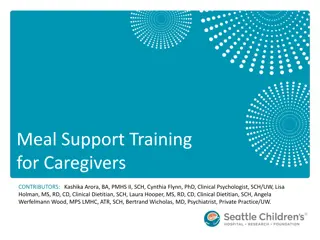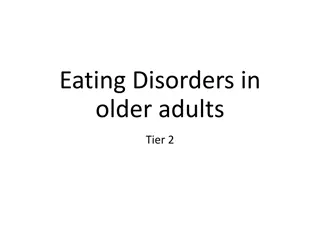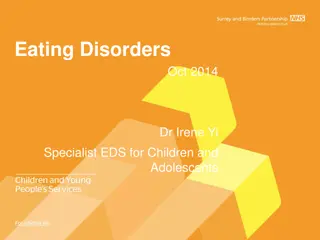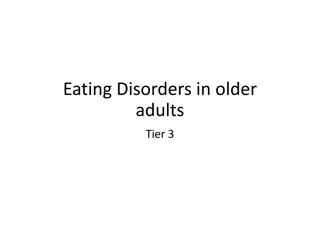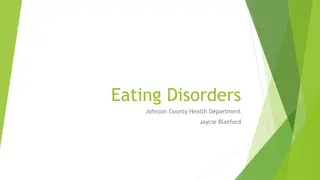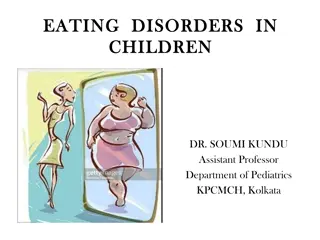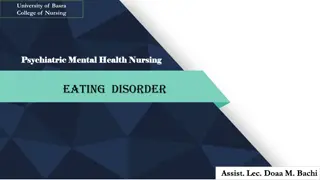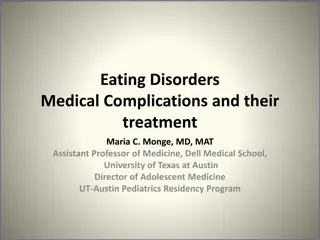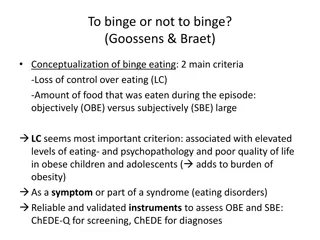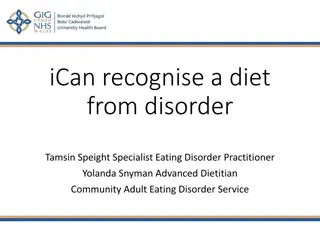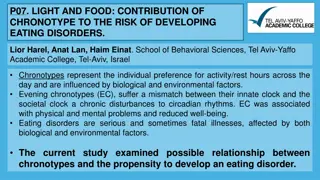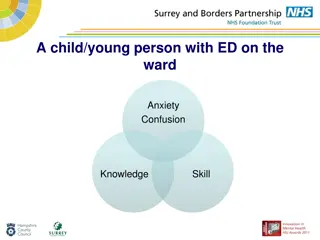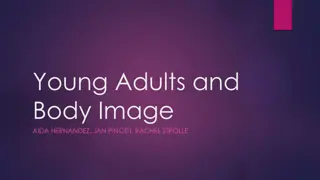Eating Disorders and School Nutrition Programs
Eating disorders are serious illnesses impacting millions globally, exacerbated by current school nutrition programs that may trigger negative consequences. Learn about the dangers and proposed alternatives in addressing the obesity epidemic and eating disorders.
Download Presentation

Please find below an Image/Link to download the presentation.
The content on the website is provided AS IS for your information and personal use only. It may not be sold, licensed, or shared on other websites without obtaining consent from the author.If you encounter any issues during the download, it is possible that the publisher has removed the file from their server.
You are allowed to download the files provided on this website for personal or commercial use, subject to the condition that they are used lawfully. All files are the property of their respective owners.
The content on the website is provided AS IS for your information and personal use only. It may not be sold, licensed, or shared on other websites without obtaining consent from the author.
E N D
Presentation Transcript
Fed Up: The Educated Response to Black/White Nutrition Education and Non-Evidence-Based Anti-Obesity Nutrition/Fitness Lessons
Objectives 1. Define Eating Disorders Healthy Healthy & Vibrant & Vibrant Life Life 2. Highlight the dangers of current school nutritional programs 3. Propose alternatives to addressing obesity epidemic and Eating Disorders
What are Eating Disorders? Not simply a life-style choice Serious, life-threatening illness Grave consequences on health, relationships & productivity Impacts millions of people every year Increasing number of males affected Accompanied by extreme emotions, attitudes, and behaviors surrounding weight and food. Includes Anorexia Bulimia Binge eating, etc. Source: Academy for Eating Disorders: Guide to Recognition and Management
Dangers of current school nutritional programs Focuses on: Good foods vs. bad foods, Teaches reading of food labels and count calories, Demonizes some food Uses scare tactics Danger: Generalizes food types Provides lop-sided information Shames certain population group Scares children into making food choices which may impede growth Fails to address body-images concerns alongside food intake Reinforces stereotypes of body sizes and healthy definition Does not offer sustainable solution to the address obesity and health concerns Triggers eating disorders
Well-intended Curriculum Triggers Eating Disorders Findings of an important Canadian study* Rigid messages about nutrition, fitness and body size delivered in classrooms triggers Exclusion of foods/food groups from meals, Increases excessive exercises, Causes negative energy balance Result: Eating Disorder is turned on in children as young as 5. Consequences Mortality rate between 15-20%.** Lost productivity, broke up relationships and families, increased health care cost *Trading Health for a Healthy Weight: The Uncharted Side of Healthy Weights Initiatives. (n.d.). Retrieved September 29, 2015. **NEDA
What are the sources? Evidence & Dangers Arkansas s anti-obesity program, launched in 2002 obesity Eating Disorders triggered at younger ages. The CDC referred to these as unintended negative consequences . Anti-obesity programs Marginalize people due to body size. rates of obesity mental health issues such as depression, BPD social problems such as bullying BMI alone indicates little about one s health The truth is people in the overweight category have, on average, longer life spans than their thinner counterparts. Teachers are not doctors, nurses or dietitians.
Evidence and Dangers: Statistics 81% of 10 year olds are afraid of being fat (Mellin et al., 1991). Of American elementary school girls who read magazines, 47% say the pictures make them want to lose weight (Martin, 2010). 42% of 1st-3rd graders want to be thinner (Collins, 1991). 70% of normal weight girls in high school feel fat and are on a diet (Ferron, 1997). Over of teenage girls and nearly 1/3 of teenage boys use unhealthy weight control behaviors (Neumark- Sztainer, 2005) Up to 35% of normal dieters pathological dieting 20 to 25% eating disorders (Shisslak, Crago & Estes, 1995) Females with Anorexia aged 15-24 are 12 times more likely to die compared to females without Anorexia (Sullivan, 1995).
Evidence and Dangers: Just when growth begins, schools recommend restricting Children & Teenagers should not be concerned about weight gain Weight gain is normal 9 years old - start of the female pubescent growth spurt 11 years old start of male pubescent growth spurt Note: Coincides with elementary school health class recommending removal of fats, sugar and carbohydrates all essential to brain and body development. Average weight gain between age 11 - 14: 30-40 pounds (13.5-18.0 kilograms) Weight gain of 20 pounds (9 kilograms) is normal Girls gain weight first as a layer of fat all over the body and then more around breast, hip and thighs. Eating more and sleeping more is NECESSARY to support large increases in height and weight, preteens and teenagers Weight gain during puberty accounts for about half of their adult ideal body weight. Source:Why a jump in a teens weight may not be a concern
Alternative to Current Curriculum Balanced Curriculum that includes: Mindful eating Eat when you are hungry. Stop when you are full. Eating a variety Inconsistent research on food nutrition There are no "good" or "bad" foods Teaching self-care Sharpen the saw (social/emotional, physical, mental, spiritual) LOVING YOUR BODY Beauty, health and strength comes in all sizes Respect yourself Source: National Eating Disorders Association, For Educators and Coaches section
Make a change Now that you know, its time to change. Obesity - not the only challenge. Weight loss a more serious and deadly issue. Do s Don t s Teach age-appropriate contents Use scare tactics Teach moderation Use sweeping generalizations Reinforce that parents are in charge Demonize any particular food type or group Promote good habits (e.g, brush your teeth after eating sweets) Show the movie Fed Up or recommend the book, Eat This Not That! Remain body positive Focus on overall wellness as a goal
The Problem with Poodle Science Respect the ways we re different. Poodle Science Video
Thank you from the parents and sufferers who fight life- threatening Eating Disorders and are members of these organizations: International Eating Disorder Family Support (https://www.facebook.com/groups/International.Eati ng.Disorder.Family.Support.IEDFS/ International Eating Disorder Action (iedaction.weebly.com)
Citations Check out this for more infographics on ED: https://www.google.com.sg/search?q=eating+disorder&espv=2&biw=1280&bih=620&source=lnms&t bm=isch&sa=X&ved=0CAYQ_AUoAWoVChMIns_87qOmyAIV0QqOCh0EyAJf#tbm=isch&tbs=rimg%3ACUY 6vhQLa1piIjg_11D42YuY4xTRNmwm9UchftFzZmyTM0NofYabSKWBNECFbi6JX0dsC41e9r5xCDH3Bfjc5o hfyIyoSCT_1UPjZi5jjFESEdEeQimocFKhIJNE2bCb1RyF8RF- Fluj2IbnkqEgm0XNmbJMzQ2hFrxZ8d1ytcByoSCR9hptIpYE0QEUpo72IJSuF8KhIJIVuLolfR2wIR0HCXFTX OrJUqEgnjV72vnEIMfRGizRrv-pAFCCoSCcF- NzmiF_1IjEWmzbcwBNrPj&q=people%20with%20eating%20disorders&imgrc=P9Q-NmLmOMVawM%3A
